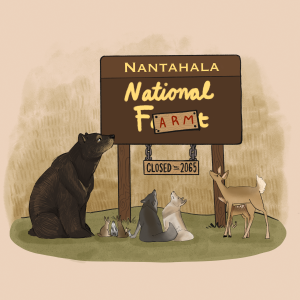Opinion: Are vegan alternatives really better for the environment?
March 12, 2021
App State is an environmentally conscious campus. In 2019, the university was awarded a “gold rating” of 73.93/100 by the Sustainability Tracking, Assessment & Rating System and in 2018, the Faculty Senate unanimously passed a resolution of a climate-neutral campus by 2035. App State’s advancements in sustainability wouldn’t be possible without its students making an effort to be eco-friendly. Students have consistently pushed for progressive change to make the school more green. The campus’s composting program and efforts to improve the sustainability of the AppalCart are both examples of initiatives that have received support from students.
One of the most effective ways to decrease individual impact on the environment is vegan alternatives. App State offers many vegan and vegetarian options in the dining halls and it’s relatively accessible to eat a vegan diet on campus. But, animal products are not limited to the food we eat: they’re also in our cosmetics and clothing. It seems like a no-brainer to switch out your half-and-half for oat milk in your morning coffee or buy cheaper faux leather shoes instead of real leather shoes. With so many vegan alternatives on the market hailed as the solution to climate change, it begs the question: are they really better for the environment?
Meat vs. Meat alternatives
Animal agriculture damages the environment and requires an astonishing amount of natural resources to produce. For example, 1,800 gallons of water are consumed to produce one pound of beef and 576 gallons to produce one pound of pork. On the other hand, one pound of corn requires 216 gallons to produce. Plants are objectively better for the environment than meat. According to a report by the Humane Party, “plant-based agriculture grows 512% more pounds of food than animal-based agriculture on 69% of the mass of land that animal-based agriculture uses.” Plant-based agriculture also emits considerably less greenhouse gases than animal-based. Animal agriculture accounts for 9% of carbon dioxide emissions, 37% of methane emissions, which is 25 times more potent than CO2 and 65% of nitrous oxide emissions, which is about 300 times more potent than CO2. So, meat alternatives are the better choice if you’re going for a more eco-friendly diet.
Dairy milk vs. Milk alternatives
Dairy production has many similar issues as meat production. Cows use a ton of water and land and they emit methane, a greenhouse gas 23 times more potent than carbon dioxide. Milk alternatives, including almond milk, coconut milk and oat milk, are the better option because they have a substantially smaller environmental impact. Among milk alternatives, almond milk uses the most amount of water in production at about 322 gallons of water per gallon of almond milk. But, that’s still far less than dairy which requires about 548 gallons of water per gallon of milk. If you’re really worried about your environmental impact, soy milk uses the least water in production at 92 gallons of water per gallon, with oat milk as a close second.
Vegan leather vs. Leather
Leather is one of the rare instances where the vegan option is not better for the environment. Most vegan leather is plastic and degrades much faster than real leather. Leather is a byproduct of the beef industry. Demand for beef is not going anywhere, so we might as well use the leather instead of throwing it away. Plus, leather is biodegradable and lasts much longer than faux leather. Vegan leather creates unnecessary plastic waste, go for the real deal.
Traditional cosmetics vs. Vegan cosmetics
Many cosmetic monoliths such as Clinique and Estée Lauder use animal products in their makeup, perfume, skin care and other merchandise. Beeswax, lanolin (oil derived from wool), squalene (which used to be derived from shark liver oil but is mostly derived from alternative sources now), gelatin and carmine (a dye made from beetles) are common ingredients used in cosmetics. If you can get over putting beetles and wool oil on your face, then go ahead, but are the alternatives better for the planet? Yes and no. Cosmetics is a loosely regulated industry so a lot of questionable chemicals go into its products. Vegan brands tend to be more ingredient conscious, but they still are held to the same standards, or lack of standards, as other brands. Cosmetics as a whole is an incredibly wasteful industry, creating heaps of plastic waste. If you’re really committed to saving the planet, staying away from cosmetics altogether is the way to go, but that’s not reasonable. Some vegan brands do make more of an effort to reduce packaging, be mindful of carbon emissions and source local, organic and safe ingredients. Vegan cosmetics is the lesser of the two evils.
In short, most vegan alternatives are better for the environment. Any effort to reduce your personal environmental impact is good. Given, there’s not much individuals can do because corporations are the main drivers of climate change, but the market is shifting to favor more eco-friendly options and we might as well take advantage of them.













